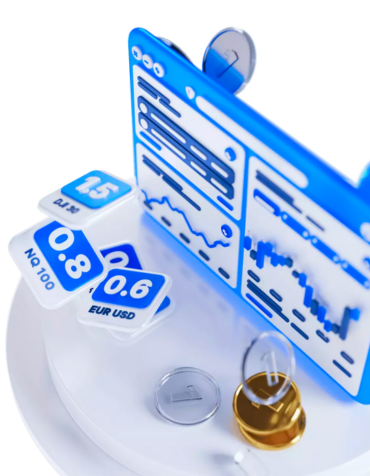We round up the best brokers that we believe offer best value for forex traders.





Trading the RSDUSD forex pair involves buying or selling it in the foreign exchange (forex) market. Here are the basic steps to trade RSDUSD:
To trade any forex pair, including RSDUSD, you'll need to open an account with a reputable forex broker. Ensure that the broker offers access to this specific RSDUSD pair.
Deposit funds into your forex trading account. The amount you deposit will determine the size of your trading positions.
Before making any trades, perform a thorough analysis of the RSDUSD pair. This analysis typically involves fundamental analysis (economic data, interest rates, geopolitical events) and technical analysis (price charts, indicators) to determine your trading strategy.
Most brokers offer trading platforms that allow you to execute trades. Familiarize yourself with the platform's interface and tools.
Choose whether you want to buy (long) or sell (short) the RSDUSD pair based on your analysis. Enter the trade order on your trading platform, specifying the amount (lot size) you wish to trade.
Executes the trade immediately at the current market price.
Sets a specific price at which you want your trade to be executed.
Sets a price at which your trade will be triggered if the market moves in a certain direction.
To manage risk, consider setting stop-loss orders to limit potential losses and take-profit orders to lock in profits at a certain price level.
Once your trade is executed, monitor the RSDUSD pair's price movement. Keep an eye on news and events that may impact the exchange rate.
When you achieve your trading objectives, either manually close the trade or wait for your predetermined take-profit or stop-loss levels to be reached.
After closing your trade, assess the outcome. Review your trading strategy and learn from both successful and unsuccessful trades to improve your skills.
Always practice proper risk management. Never risk more than you can afford to lose, and consider using leverage cautiously if available.
For the first strategy, we're looking at trend following. This means we want to identify the long-term trend by analyzing charts using technical indicators like moving averages or trend lines. Once we've identified the trend, we'll be on the lookout for opportunities to enter trades in the direction of that trend. Of course, we want to make sure we protect ourselves against any adverse price movements, so setting appropriate stop-loss orders is important. And as our trade moves in our favor, it's a good idea to use trailing stops or take-profit targets to secure our profits.
Moving on to strategy number two, this one is all about breakouts. We'll be monitoring key support and resistance levels on the RSD/USD chart. When there's a significant breakout above resistance or below support levels, that's our signal to enter a trade in that direction. But of course, risk management is crucial here too, so don't forget those stop-loss orders! And if you want some extra confirmation before taking action, consider using other technical indicators like volume or momentum oscillators.
Now let's talk about strategy number three: news trading. This one requires us to stay updated with economic news releases related to Serbia and the United States. We'll need to follow economic calendars and news sources so we can identify upcoming events that may impact either country's currency. Once we've got that information, it's time for some analysis! We want to think about how certain news releases could affect RSD/USD exchange rates – things like interest rate decisions or GDP reports can have a big impact here. Based on our analysis, if we anticipate market reactions correctly, it might be worth taking positions before important announcements are made – but remember this comes with its own risks too! For example: if you expect positive news for Serbia's economy, consider buying RSD against USD before its release; and if you anticipate negative news for US markets, consider selling USD against RSD ahead of time.